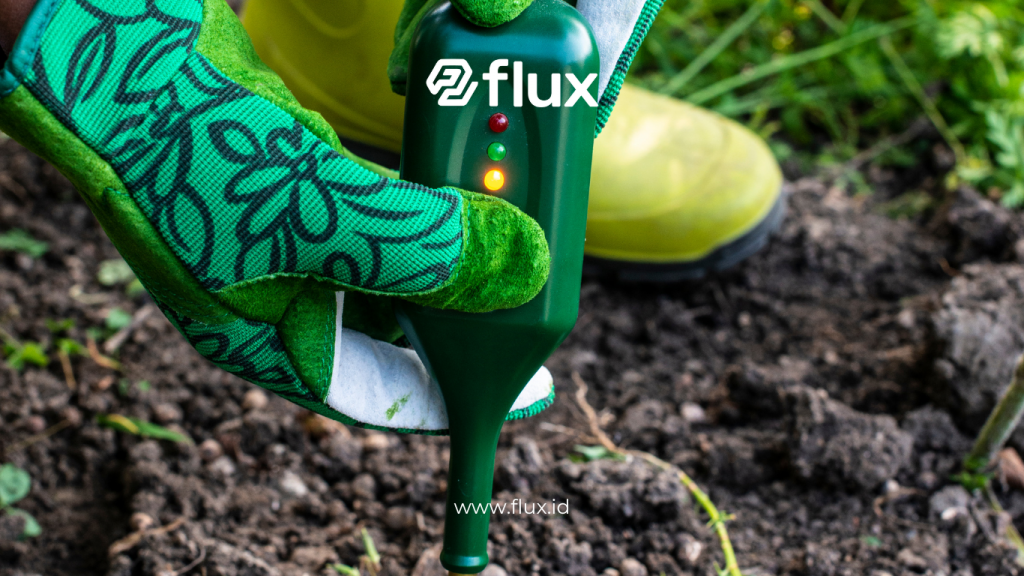Don't miss our holiday offer - 20% OFF!
Sustainable land management requires precise methods to maintain soil health as the foundation of agricultural productivity. Soil health sensors have become a vital tool for ensuring land sustainability, enabling real-time monitoring of soil conditions, and supporting better decision-making. This article will discuss the importance of soil sensor technology, its working principles, benefits, and its role in sustainable land management.
Contents
- 1 1. What is a Soil Health Sensor?
- 2 2. Key Components in a Soil Health Sensor
- 3 3. How Does a Soil Health Sensor Work?
- 4 4. Benefits of Soil Health Sensors in Sustainable Land Management
- 5 5. Application of Soil Health Sensors in Various Land Types
- 6 6. Implementation of Soil Health Sensors in Indonesia
- 7 7. Challenges in Using Soil Health Sensors
- 8 8. Future of Soil Health Sensors in Sustainable Agriculture
- 9 9. Conclusion
1. What is a Soil Health Sensor?

Read More: Soil Nutrient Sensor: Enhancing Agricultural Yields
A soil health sensor is a device used to measure various soil parameters such as moisture, temperature, pH, and nutrient content. These sensors are connected to IoT (Internet of Things) systems, enabling automatic monitoring of soil conditions and providing real-time data essential for boosting agricultural productivity and sustainable land management.
2. Key Components in a Soil Health Sensor
- Soil Moisture Sensor: Monitors water levels in the soil, helping to manage irrigation and maintain the water balance required by crops.
- Nutrient Sensor: Measures levels of nitrogen, phosphorus, and potassium, allowing farmers to understand the soil’s nutrient condition.
- Soil pH Sensor: Measures soil acidity or alkalinity, essential for crop selection and fertilizer use.
- Soil Temperature Sensor: Provides information on soil temperature, which is critical for assessing whether conditions are suitable for plant growth.
3. How Does a Soil Health Sensor Work?
Soil health sensors work by placing devices at specific points across the field. Each sensor gathers data and transmits it to a central device or application accessible to farmers. Some sensor technologies use electromagnetic signals to detect water content, while others use chemical reactions to detect pH and nutrient levels.
4. Benefits of Soil Health Sensors in Sustainable Land Management

Read More: Smart and Sustainable: Soil Moisture Sensors
- Better Nutrient Management: Sensors help determine specific nutrient requirements, reducing excess fertilizer use that can harm soil ecosystems.
- Water Conservation and Irrigation Management: By knowing soil moisture levels, farmers can adjust irrigation more accurately, making water usage more efficient.
- Improved Crop Productivity: Data from soil sensors enables quick responses to suboptimal conditions, ultimately increasing crop yields.
- Reduced Environmental Impact: Sensors reduce reliance on excess chemicals and minimize soil pollution.
5. Application of Soil Health Sensors in Various Land Types
- Large-Scale Agriculture: Soil sensors enable monitoring across large areas, supporting more accurate irrigation and fertilization decisions.
- Organic Farming: In organic agriculture, soil health sensors support natural management and reduce reliance on synthetic chemicals.
- Forestry and Land Rehabilitation: These sensors aid in maintaining soil fertility on rehabilitated lands, ensuring sustainable vegetation growth.
6. Implementation of Soil Health Sensors in Indonesia

Read More: Soil Moisture Sensors: Enhancing Park Management Efficiency
Soil health sensor technology has begun to be implemented in various regions of Indonesia, particularly within smart agriculture projects. In areas with high rainfall, soil moisture sensors can help avoid excessive irrigation, while in drier areas, these sensors facilitate efficient water use. Another example is the application of sensors to optimize soil pH for plantation crops such as coffee and tea.
7. Challenges in Using Soil Health Sensors
- Installation and Maintenance Costs: This technology remains relatively costly, especially for small-scale farms.
- Infrastructure Limitations in Remote Areas: The use of soil sensors in remote areas is often hampered by inadequate internet connectivity.
- Lack of Education and Training: Some farmers may not fully understand how to leverage this technology effectively.
8. Future of Soil Health Sensors in Sustainable Agriculture
Future developments in soil health sensors will focus on energy-efficient and cost-effective technologies to make these tools more accessible to farmers. Integration with drones and AI-based analytics will further facilitate land management. More accurate and durable sensors will make it easier for farmers to manage their land more efficiently and sustainably.
9. Conclusion
Soil health sensors are a technological innovation with an essential role in supporting sustainable land management. By enabling real-time monitoring of soil conditions, these sensors help farmers make more accurate decisions and reduce environmental impact. The challenges of cost and infrastructure limitations are expected to be addressed through the development of more affordable and easy-to-implement technology. Widespread adoption of soil health sensors in Indonesia will positively impact national agriculture, strengthen food security, and support environmental conservation.





